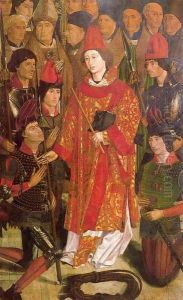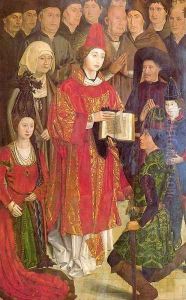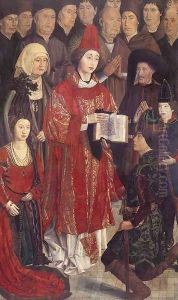Nuno Goncalves Paintings
Nuno Gonçalves was a pioneering Portuguese painter, active in the 15th century, whose life and work are shrouded in mystery due to the scarcity of biographical details and surviving works attributed to him. Despite the limited information, Gonçalves is celebrated for his significant contribution to Portuguese art history, particularly for his role in the development of Portuguese painting during the early Renaissance period. His most famous work, the Saint Vincent Panels (Painéis de São Vicente de Fora), is considered one of the most important pieces of Portuguese Renaissance art and provides crucial insights into the religious, social, and cultural dynamics of 15th-century Portugal.
The exact dates of Gonçalves's birth and death are not known, but he is believed to have been active as a court painter in Lisbon during the reign of King Afonso V of Portugal. This period was marked by a flourishing of the arts and culture under the patronage of the Portuguese court, which was open to new influences from other European centers of the Renaissance. Gonçalves's work is characterized by its detailed realism, sophisticated use of color, and intricate portrayal of figures, which reflect the influence of Flemish painting, a style that was highly regarded in Portugal at the time.
The Saint Vincent Panels are a polyptych consisting of six panels, believed to have been completed around 1460. They depict a complex scene with more than 60 figures, including saints, nobles, and commoners, gathered around Saint Vincent of Saragossa, the patron saint of Lisbon. The panels are notable for their detailed portrayal of the individuals, which suggests they may be portraits of contemporary figures, including possibly the artist himself. This has led to much speculation and research attempting to identify the figures and understand the work's iconography. The panels were lost for centuries before being rediscovered in the late 19th century, and they now hold a place of pride in the Museu Nacional de Arte Antiga in Lisbon.
Gonçalves's legacy is that of a master who brought the technical and stylistic innovations of the Northern Renaissance to Portugal, adapting them to the local context and in doing so, creating a unique body of work that has had a lasting impact on the development of Portuguese art. Despite the limited number of works attributed to him, his influence is seen in the works of subsequent generations of Portuguese artists. The Saint Vincent Panels remain a subject of ongoing study and admiration, testament to Gonçalves's skill and the rich cultural milieu of 15th-century Portugal.







